WHAT YOU SHOUD KNOW BEFORE TRAVELING TO PERU
HOW DO YOU PREVENT ALTITUDE SICKNESS?
A few tips to help prevent it or alleviate some of the symptoms:
- Plan your itinerary so you gradually increase elevation.
- Eat smaller meals with carbs. Altitude sickness causes a loss of appetite, so you likely won’t feel up for large meals anyways.
- Avoid alcohol.
- Drink a lot of water.
- Take Ibuprofen. Research has shown it can prevent altitude-induced headaches and other symptoms.
- Locals may also suggest chewing on coca leaves or drinking coca tea.
DO MOST LOCALS SPEAK ENGLISH?
- Not really. Many locals involved in the tourism industry will speak English, but beyond that, you might need at least basic Spanish to order food, go shopping, or pick up a taxi.
- You can use google translate when needed while You are there. For taxis, you either arrange them through your hotel, use Uber (in Lima), or relie on our minimal Spanish.
- In short, you can survive in Peru without Spanish, but knowing it would make your life easier.
CAN I DRINK THE WATER?
No. Not unless you use a water filter like this or vigorously boil it for 3 minutes.
While it is not the most environmentally-friendly option, most hotels will provide 2 complimentary bottles of water a day in your room. You can also buy water for relatively cheap at local convenience stores (away from the touristy areas
Avoid ice in drinks or ask if their ice was made with purified water. It might also be wise to not use tap water for brushing your teeth.
WHAT IS THE BEST TIME OF YEAR TO GO?
There are few things to note when picking what time of the year to go to Peru:
The Inca Trail is closed in February to allow for maintenance.
The wet season is from November to April. During the height of the wet season, trails might be muddy or closed. Most days, you’ll experience afternoon showers, possibly limiting the amount of sightseeing time.
June to August is the busiest time. You will need to book train and entry tickets for Machu Picchu and permits for the Inca Trail months in advance. Once you get there, you will be fighting crowds.
CAN I HAGGLE?
Yes! Haggling or bargaining is expected at markets or if buying something directly from an individual (taxis, tours, etc). This won’t work in restaurants with set prices or higher-end stores. Unlike in other countries where haggling in common, Peruvians will not start at 5x what it should cost and you have to game it all the way down. Vendors will set the price a bit above what the anticipate selling it for and are willing to go down a small percentage to make the sale. Don’t expect to walk away with a T-shirt with a price tag of 40 soles for 4 soles. It just won’t happen.
WILL MY CREDIT CARD BE ACCEPTED AT SHOPS?
Cash is preferred in Peru. Many shops and food stalls will be cash-only. Markets definitely will be. However, both Peruvian soles and US dollars are widely accepted. Occasionally, vendors won’t give you the best exchange rate if you are paying with US dollars, but there is also a chance it might be slightly cheaper to pay in USD. The exchange rate is pretty constant day-to-day and month-to-month. You can withdraw both USD and soles from ATMs in Peru.
Credit Cards are typically accepted at hotels and higher-end shops and restaurants, with Visa being the most widely-accepted card. Be sure to use a credit card with no foreign transaction fees.
WHAT WEATHER SHOULD I EXPECT?
Peru has wet and dry seasons. Since it is in the Southern Hemisphere, Peru’s winter and dry season are from April to October. Temperatures do not change drastically throughout the year. You can expect temperatures in the 60-70sºF (17-26ºC) during the daytime when you visit. While up in the Highlands, days are warm but nights are chilly.
If you are visiting during the wet season, expect dry mornings but rain outbursts in the afternoon.
WHAT DO I NEED TO PACK?
In general, the most important items are comfortable hiking clothes, sunscreen, a lightweight jacket, hat, toilet paper, sunglasses, and a camera to capture all of the beautiful scenery.
